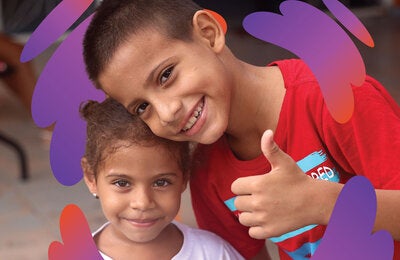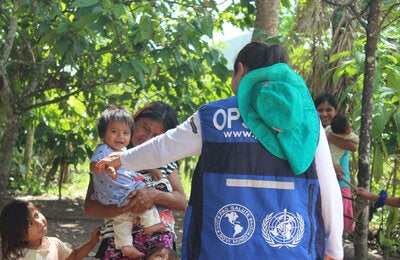
PAHO has begun to provide training to assist health authorities in the Americas to provide information about the disease to their populations in a truthful, timely and empathic way.
Mexico City, 4 March 2020—Informing populations about the health risks posed by COVID-19, as well as measures they can take to protect themselves, is key to mitigating spread and reducing the likelihood that people will become infected. The first cases of this new coronavirus disease 2019 have already been registered in 8 countries of the Americas.
Experts from the Pan American Health Organization (PAHO) have begun training the Region’s health authorities on the principles of risk communication during public health emergencies. Risk communication focuses on real-time communication of the dangers that may threaten a population. This type of communication also takes into account perceptions that people may have about a particular risk, which may not coincide with expert opinion, particularly when it comes to situations that are changeable and uncertain.
The provision of accurate, timely and frequent information in a language that people understand, via reliable channels, enables populations to make decisions and adopt positive behaviors to protect themselves and their loved ones from diseases such as COVID-19.
“Timely, evidence-based information is the best vaccine against rumors and misinformation, “said Dr. Jarbas Barbosa, Deputy Director of PAHO, during a virtual workshop for representatives of Latin American Ministries of Health, that was held on 20 February. “The Ministry of Health should be the primary source of reliable information in all countries,” he added.
Barbosa highlighted that people should also be informed when imported cases are reported, and again if there is secondary transmission (cases of local transmission from the imported case). They should also be informed later, if there is transmission in the community (local cases that are not linked to travelers), outbreaks and, finally, possible widespread/sustained transmission. “People need to understand what the risk is for them at each stage, without minimizing or exaggerating the situation, “said the Deputy Director of PAHO.
Current information indicates that 80% of people who contracted COVID-19 experience mild symptoms similar to flu and recover. The remaining 20% experienced more severe symptoms and, of these, 5% were critical and required hospitalization and assistance breathing. Around 2.3% of people with this virus have died. The majority of deaths occurred in older adults with pre-existing conditions.
People can take a series of simple measures to reduce their risk of infection. These include frequent handwashing with soap and water; covering your mouth and nose with your inner-elbow or a tissue when coughing or sneezing; and avoiding close contact with people with flu-like symptoms.
Strengthening communication skills in Mexico
On 27-28 February, 25 participants from the Ministry of Health and other health-related agencies in Mexico participated in a workshop on risk communication provided by PAHO/WHO experts. Part of the workshop was also transmitted virtually through Epidemiological Pulse, a channel of the Ministry of Health’s Epidemiology Department, that reached almost 1000 virtual participants in 32 Mexican states.
During the workshop, participants learned the principles of risk communication and how to apply them in order to help reduce the spread of diseases and prevent and reduce infections and even deaths in the context of public health emergencies.
“Risk communication is an essential part of emergency preparedness and response plans. In collaboration with the Directorate of Epidemiology, and with the support of PAHO, we welcome this workshop, “said Dr. Lucero Rodriguez, Director of Health Promotion at the Ministry of Health. “The aim of this workshop is to provide tools that will allow us to become more efficient in the way we communicate the problem posed by COVID-19,” he added.
During the second day of the workshop, Mexico confirmed its first imported case of COVID-19. “The workshop was strategic because it also enabled us to define some messages and strategies than can be used in a totally real context,” said Rodriguez.
Communicating during public health emergencies is nothing new for Mexico. In 2009, the country faced the H1N1 influenza pandemic, from which many lessons were learned. “We learned that it is essential to be prepared and that you must prepare for all scenarios. We also learned that just one spokesperson can get worn out quickly and that while the media can be our allies, we must train them beforehand, “said the Director of Health Promotion, who also communicated about H1N1 a decade ago
The workshop revealed that information is the most important resource to enable a population to make informed decisions on how to take care of their health, and to prevent rumors and misinformation. Risk communication must also form an essential part of any public health emergency preparedness and response plan.
Further communication training
PAHO/WHO provided training on risk communication for professionals of the Ministry of Health in Argentina this week.
At the regional level, the organization also plans to conduct workshops to strengthen communication capacities in Latin America and Caribbean countries on COVID-19.
New communication materials on COVID-19
PAHO/WHO have also developed a guide to help leaders in the Region communicate on coronavirus disease 2019: Download the guide...



